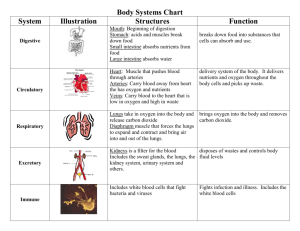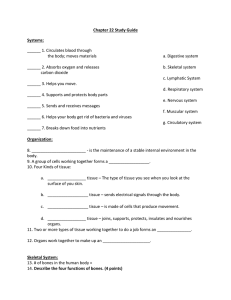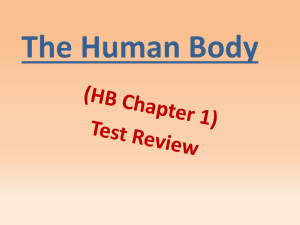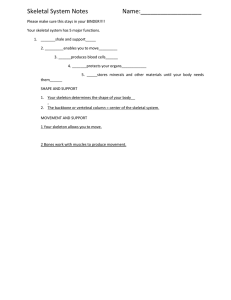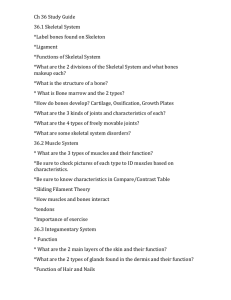H B UMAN ODY
advertisement
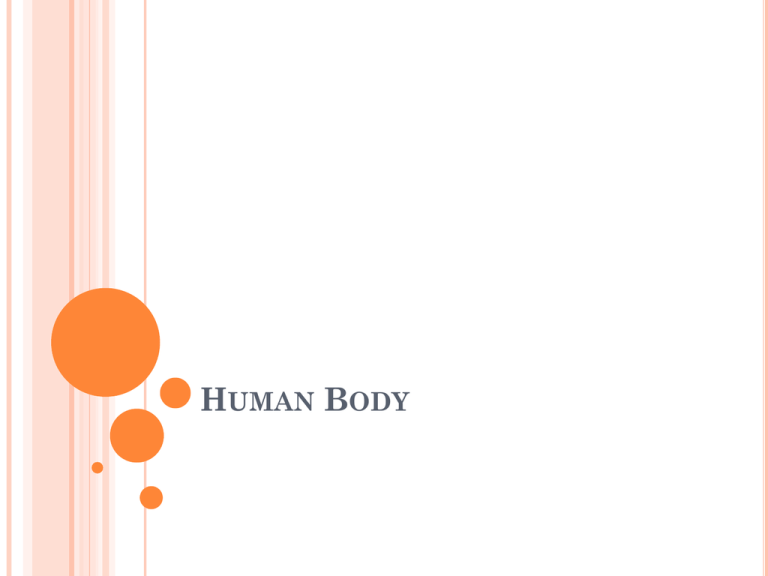
HUMAN BODY SKELETAL AND MUSCULAR SYSTEM Bones give us shape, support, and protection Born with 300 bones, but as you age, some bones fuse together, an adult has 206 bones Largest bone: femur Smallest bone: stapes (located in your ear) SKELETAL AND MUSCULAR SYSTEM Bones cannot move on their own, they need muscle to work. SKELETAL/MUSCULAR SYSTEM Joints help humans swivel, bend, curl, pivot, and turn. Joints are points where 2 or more bones are joined together by muscles. CIRCULATORY SYSTEM What is the largest muscle in the body? What does the heart do? Where does blood go? Arteries are red because they are carrying oxygen. Veins are blue because they do not have oxygen. REPERTORY SYSTEM We breathe by taking in air through our nose and mouth. The air then passes through the trachea (windpipe) into the lungs. The lungs swap oxygen for carbon dioxide with the blood stream. The diaphragm is a muscle that helps push out my lungs when they are filling up with air. The diaphragm also help let my lungs back in to squeeze out the air. DIGESTIVE SYSTEM DIGESTIVE SYSTEM Canines (sharp and pointy shapes used for cutting and tearing) Incisors (big, flat wedge shapes used for biting off food) Bicuspids or premolars (2-pointed shapes for grinding) Molars (flat, squared shapes used for grinding) DIGESTIVE SYSTEM After the mouth, the food passes through a tube in your throat called the esophagus. The food passes through the esophagus into the stomach. Muscles move the walls of the stomach to mash up the food. DIGESTIVE SYSTEM The small intestine squeezes the food through a 20 foot long tube that is coiled up in the body. The small intestine pulls nutrients out of the food and is taken into the bloodsteam. The large intestine takes the water out of the food and pushes out the solid waste. NERVOUS SYSTEM The brain contains nerves that send messages all over the body through other nerves. The brain is part of the central nervous system along with the spinal cord. The spinal cord is a bundle of nerves that relay messages from the brain to different parts of the body. The brain also receives and process messages from our senses. ENDOCRINE SYSTEM A system of glands that helps the body function. It contains a group of glands that release hormones (special chemicals) into the body. Controls: body temperature, sleep, hunger, growth sweat, “fight” or “flight”, male or female characteristics, etc
